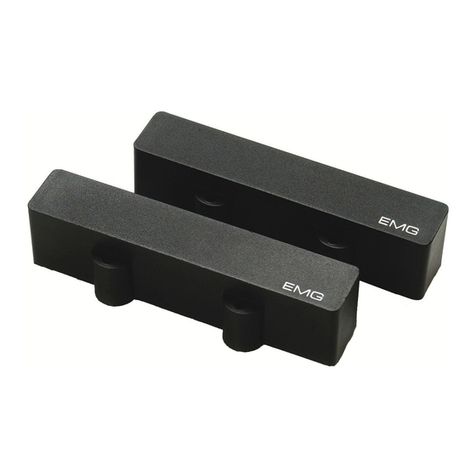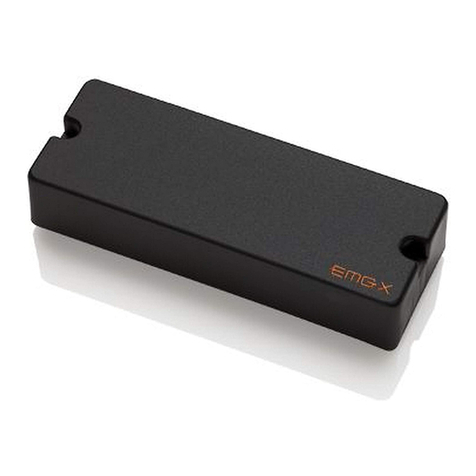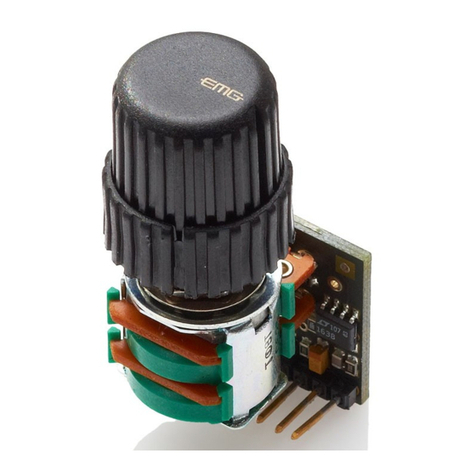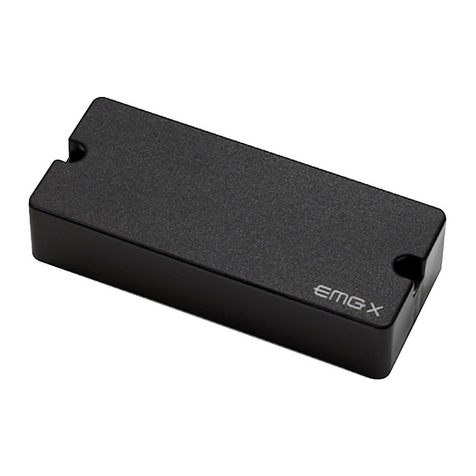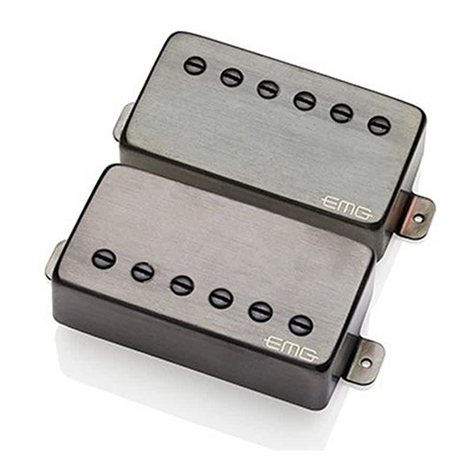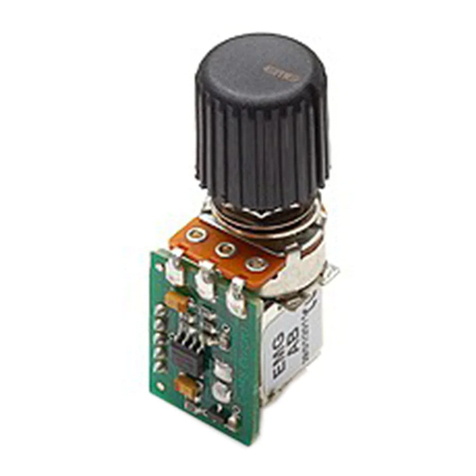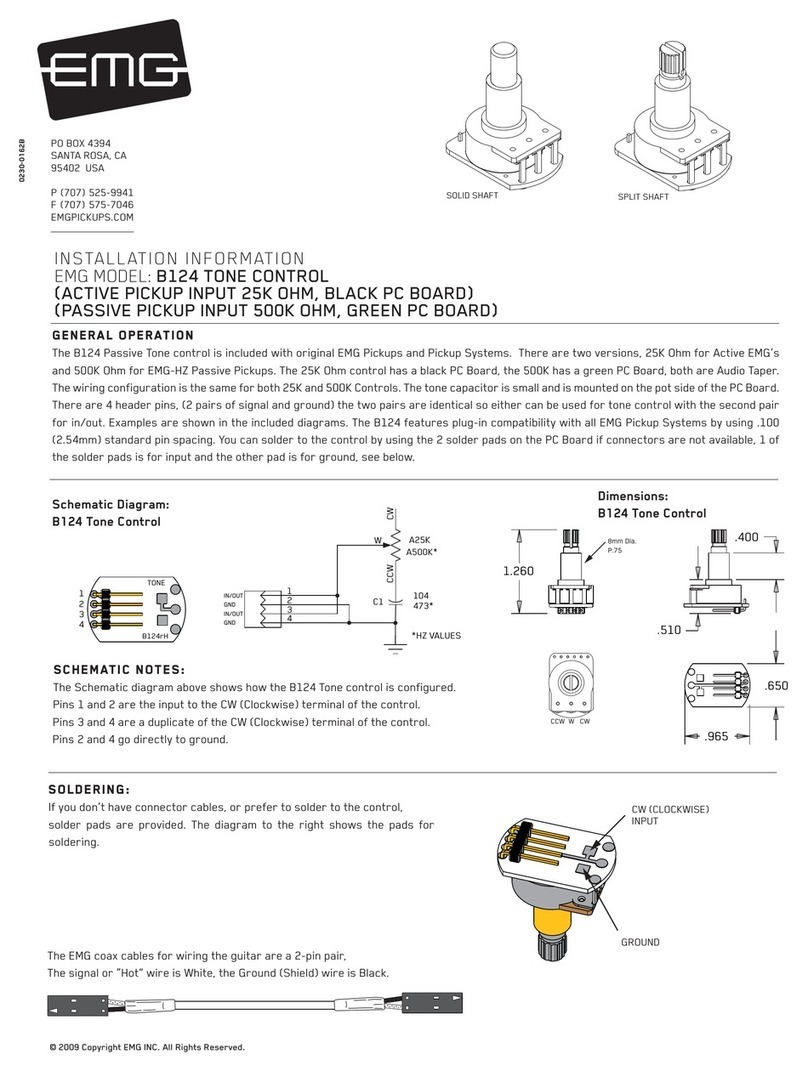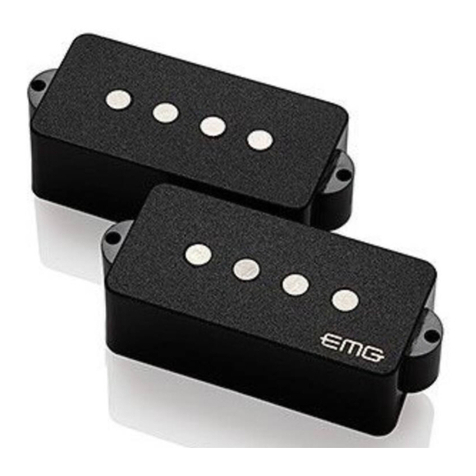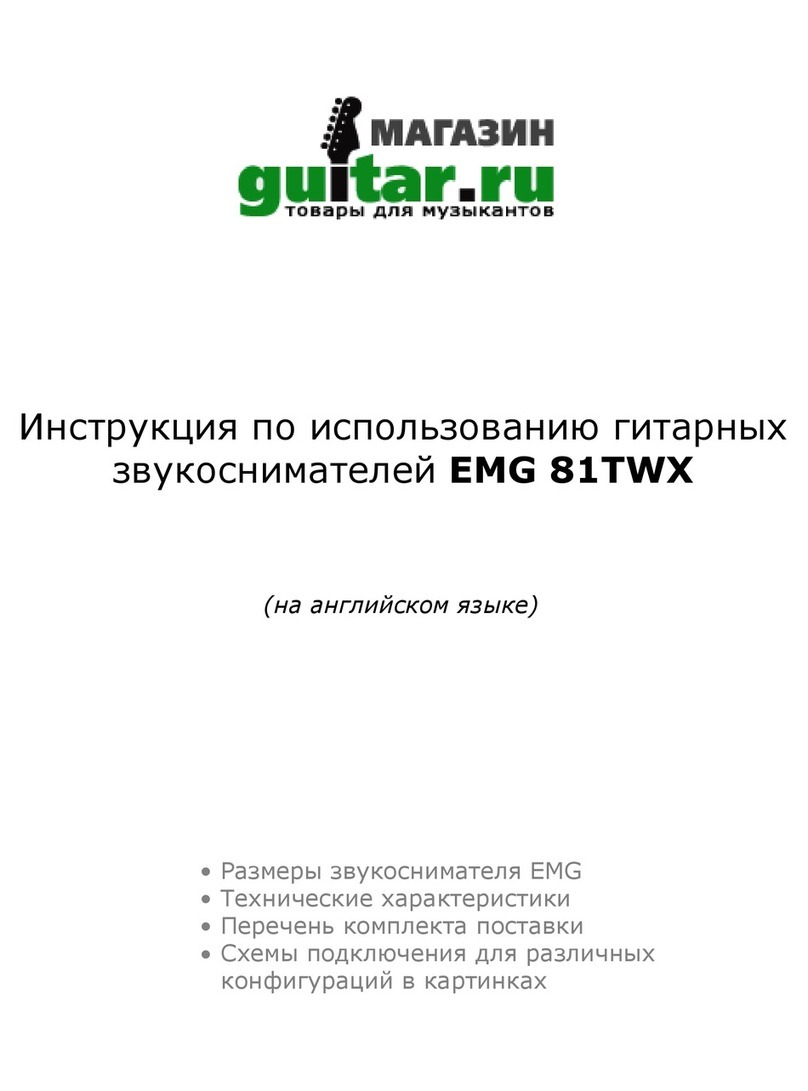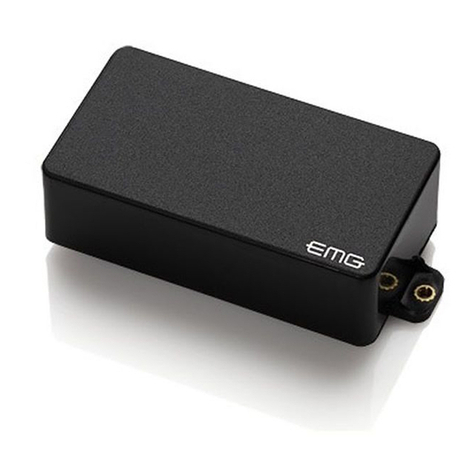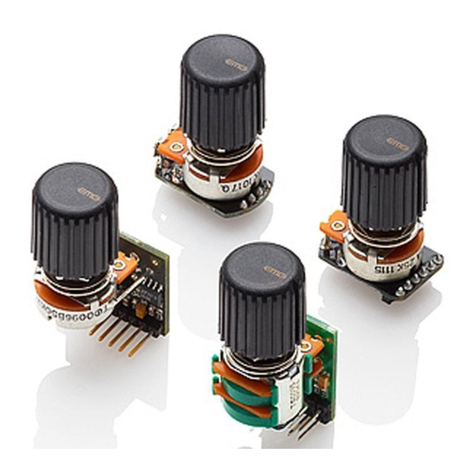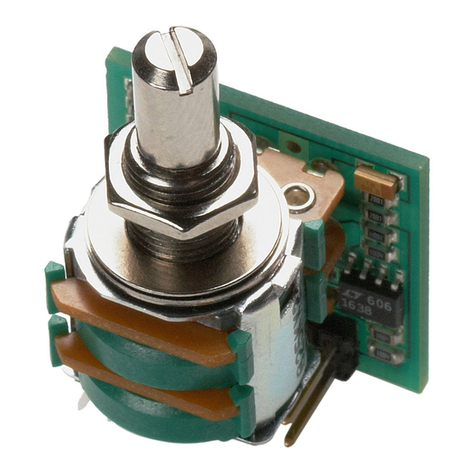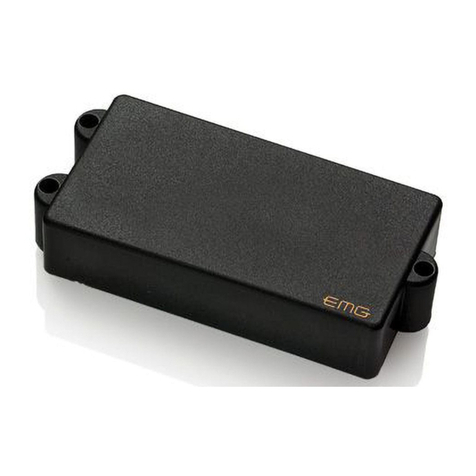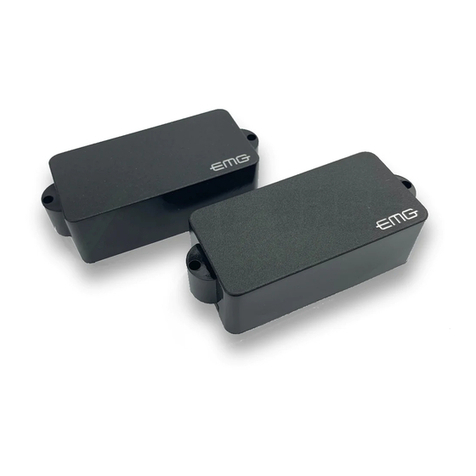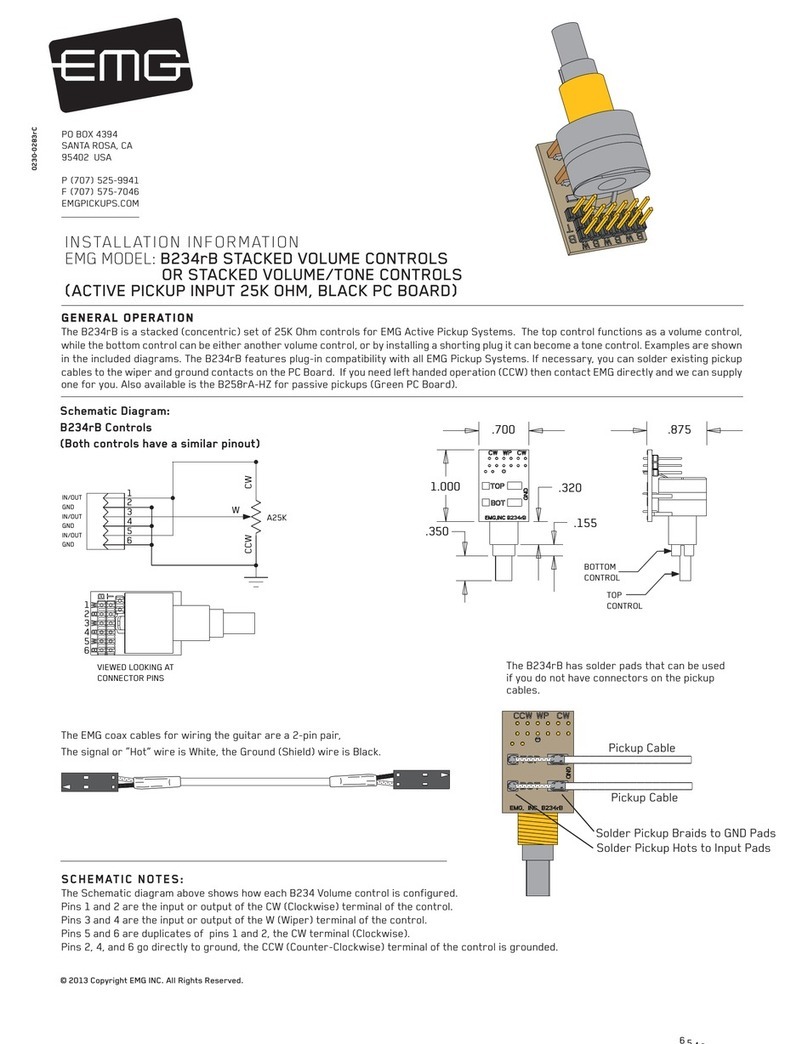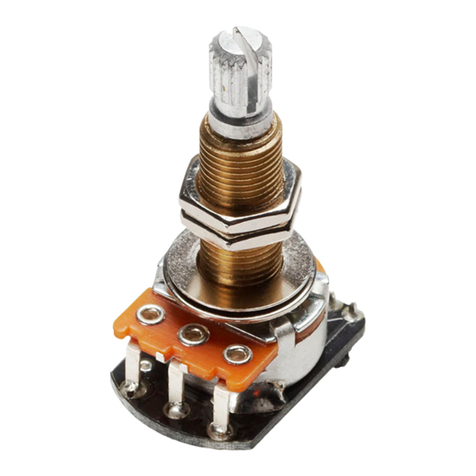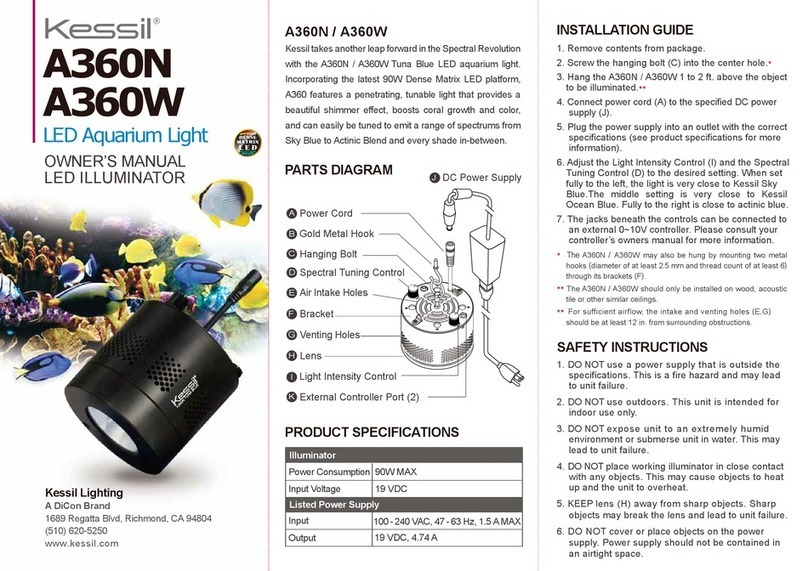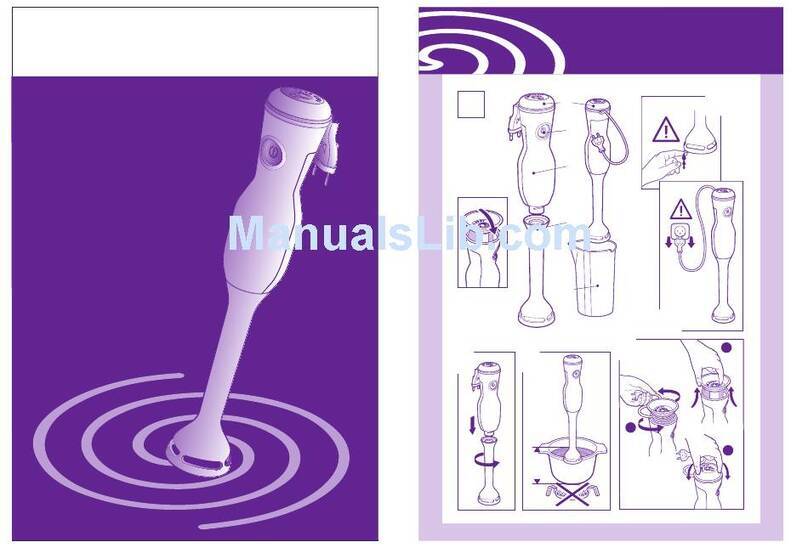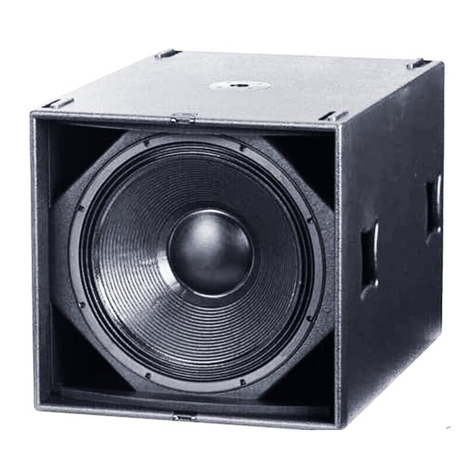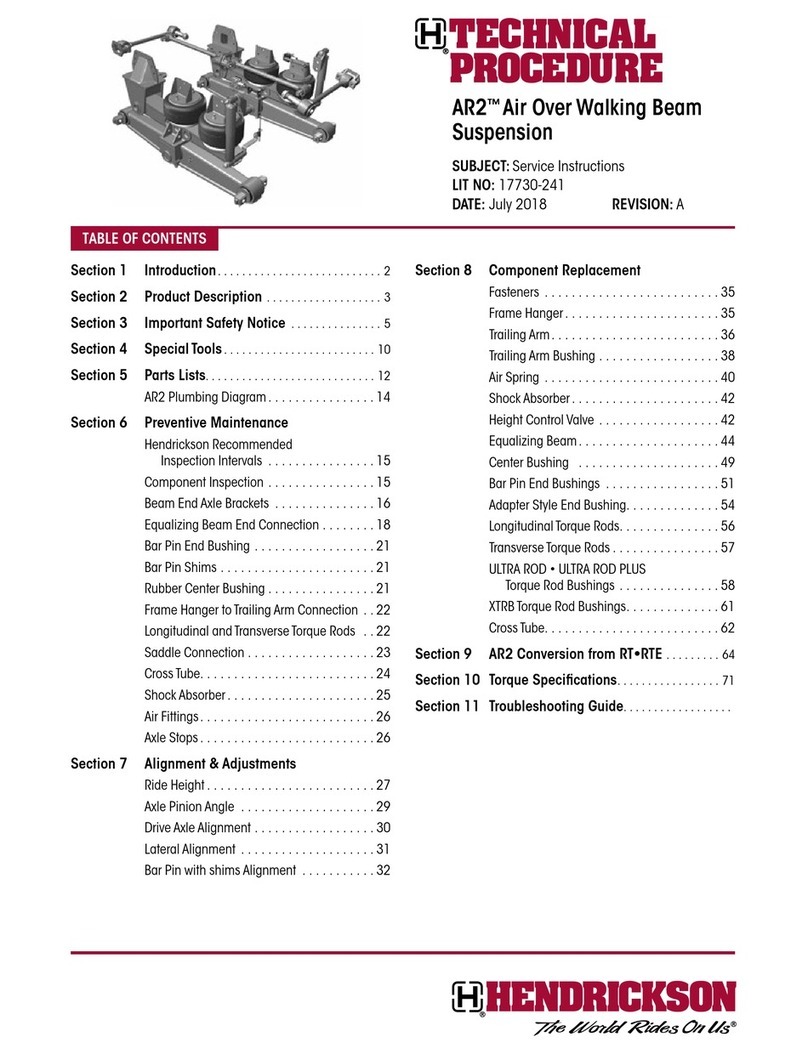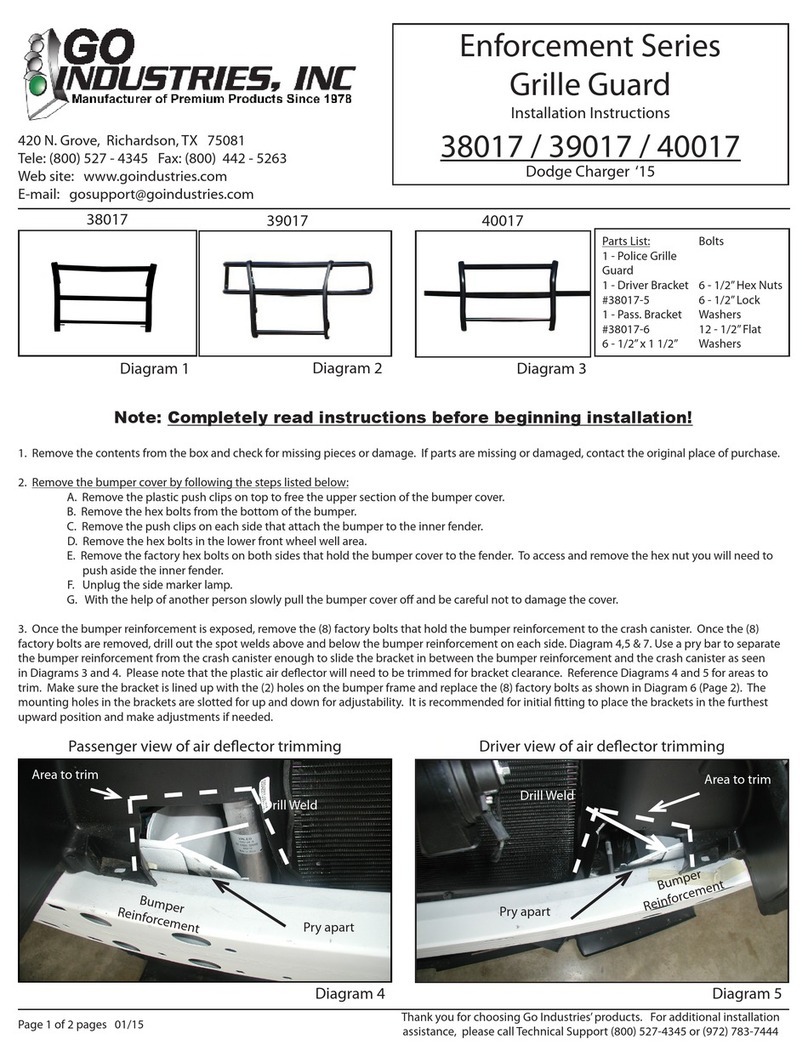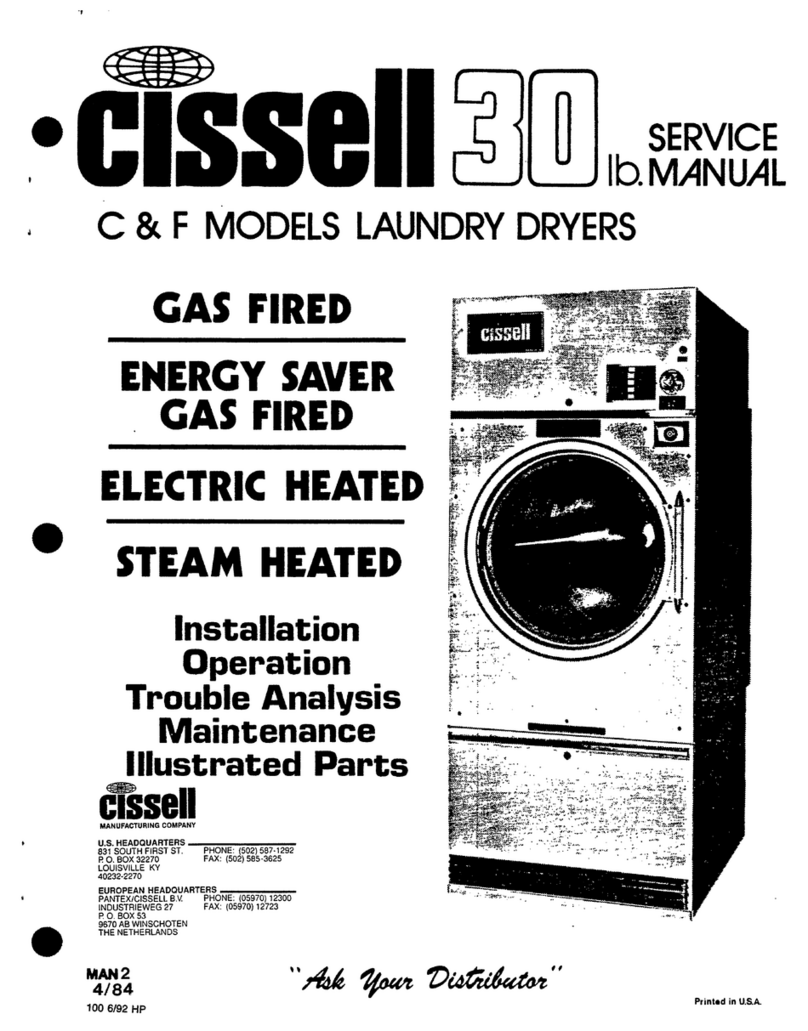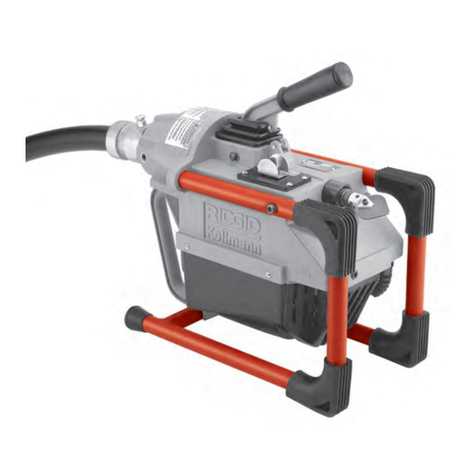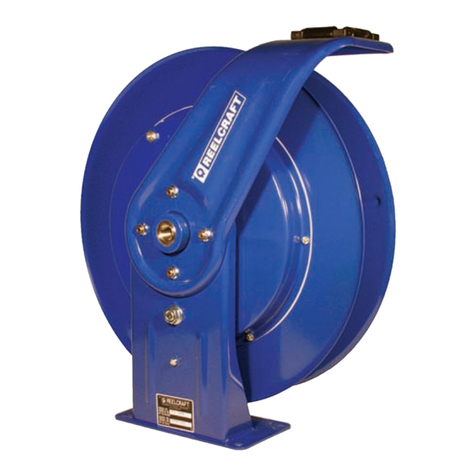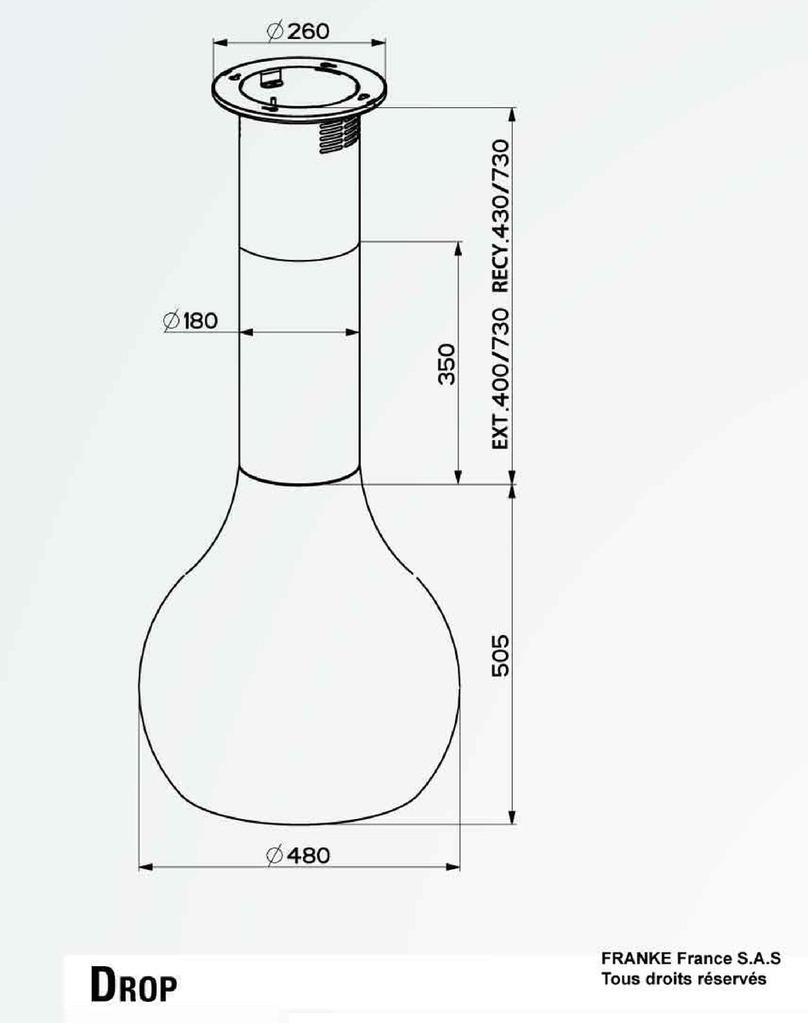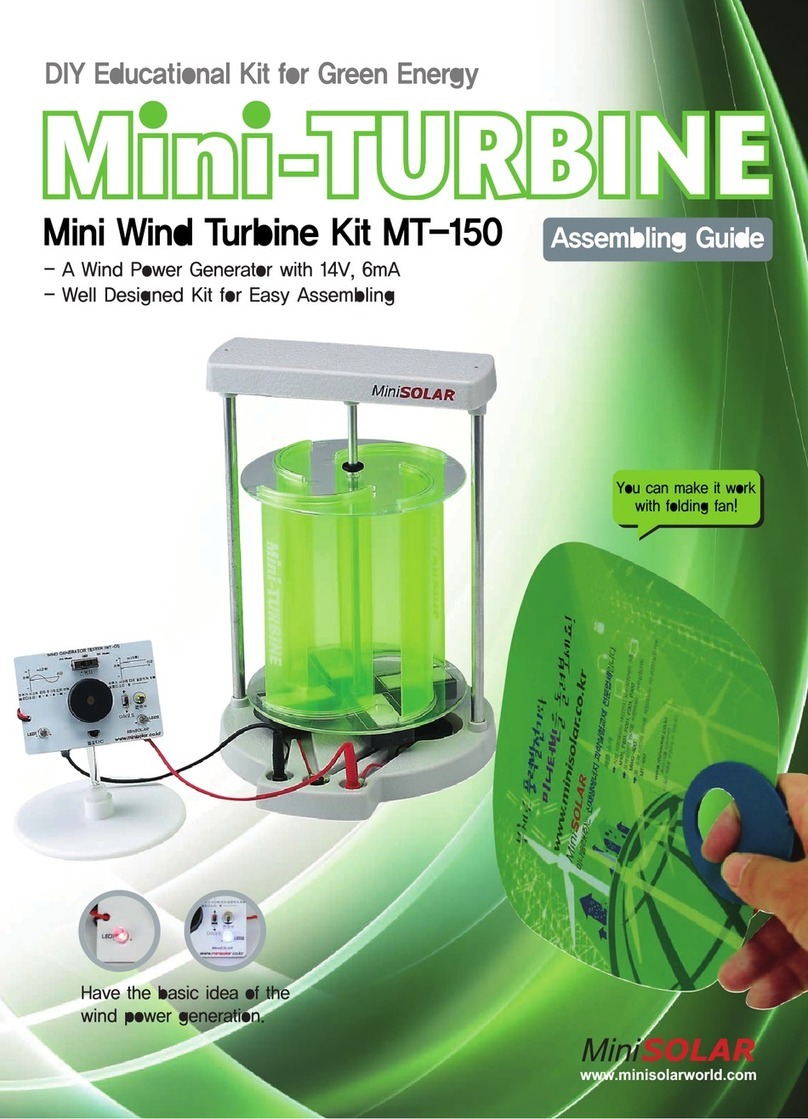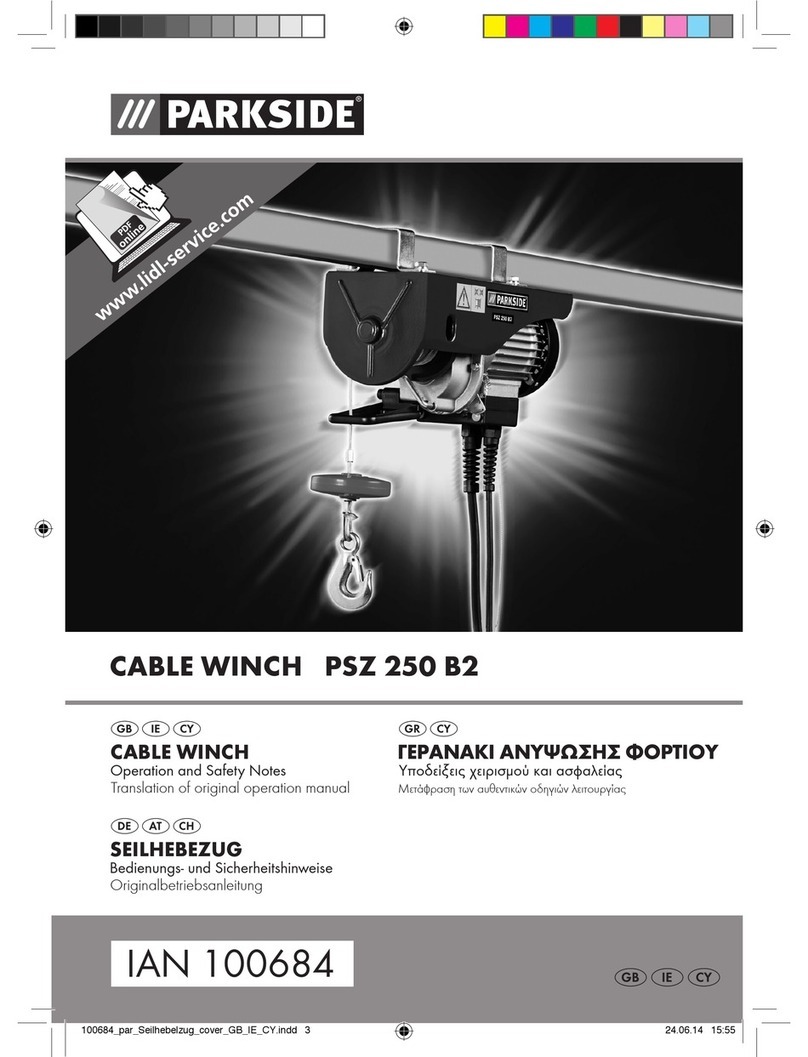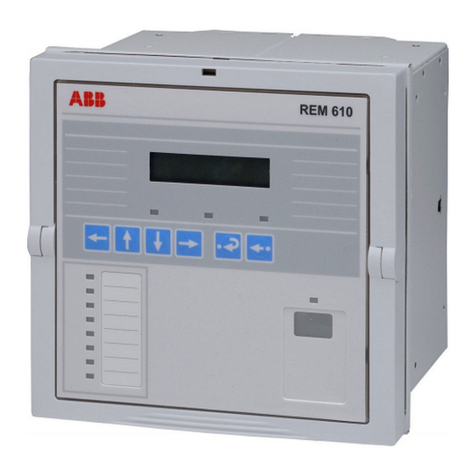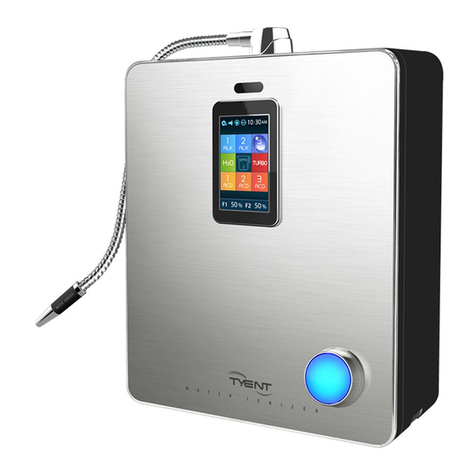
General Notes:
Every attempt has been made to make this a solderless installation.
There are some instances where this is not possible;
1) If your instrument uses the long panel output jack and you had passive pickups
you will need a new stereo output jack, the Switchcraft 152B is recommended.
Soldering to the new jack will be required.
2) Some instruments may already have a battery holder installed, in that case
soldering may be required.
3) Instruments with two pickups may need soldering to the selection
switch in some installations.
Installation Instructions:
EMG Model: MMTW
MMTW INSTRUCTIONS Page 2
Using the MMTW Push-Pull Switch
The Push-Pull Switch included with the EMG-MMTW allows you to choose between
two internal pickups of the EMG MMTW, single-coil and dual-coil. The Push-Pull Pot
has two separate sections: The Switch and the pot, described below.
Refer to Diagrams #1 and #2
The Push-Pull Switch section (DPDT) lets you choose between the
single-coil sound and a dual-coil sound by pulling or pushing the pot shaft
up or down. You have the option of having the single-coil sound in either
the up or down position and vice-versa for the dual-coil sound.
Diagrams #1 and #2 show how to connect the 35-TW Pickup cable to choose
either option. Select the diagram that suits you and push the cable
connectors onto the single line 6-pin header.
Simply turn over cable connectors 1 and 2 to change the wire order
and this will choose between the two options.
Connector 3 remains the same for either choice.
Using the Pot Section as:
1) A Master Volume for the Instrument or, the Pickup Volume control
Refer to Diagrams #3 and #4
The pot section (25K) can be used either as a Volume control
for the pickup, or it can be used as the Master Volume for the guitar.
Diagrams #3 and #4 show how to connect either option.
Use the dual-line 10-pin header and push the cables on and
install the shunts as needed onto the labeled headers H1 thru H5.
Use Diagram #3 if you have a single MMTW installed in your instrument,
or have two or more pickups in your instrument and want to use the
pot as the Volume control for the MMTW Pickup only.
Installing the shunts on Positions H3 and H5 sends the pickup signal
to the wiper of the 25K Pot, and the output of the 25K Pot is at Position H1.
For two pickup guitars, Diagram #4 allows you to use the 25K Pot independently
of the pickup output. By taking the output of the pickup from Position H4, the
Volume control is now available to use as a Master Volume with H1 and H2 being
the input and/or output of the Volume control. H1 and H2 Positions are
interchangeable.
Position H4, now the output of the pickup, would typically go to a selection switch
or a pan-pot. Don’t forget to install the shunt on H5.
Using the MMTW Push-Pull Pot Section
The Push-Pull Pot side of the EMG-MMTW allows you 4 different options:
1) Use the pot as a Master Volume for the Instrument
2) Use the pot as a Volume control for the MMTW Pickup
3) Use the pot as a Master Tone control for the Instrument
4) Use the pot as a Tone control for the MMTW pickup
On the PC Board there is a dual-line header with 5 pairs of pins. They are
listed on the PC Board as H1 through H5. By using the the connections
shown in Diagrams #3 through #6, you can choose any of the 4 options.
SHUNT ON (H5)
PICKUP OUTPUT (H4)
MASTER VOLUME
OUTPUT (H2)
MASTER VOLUME
INPUT (H1)
PICKUP OUTPUT (H1)
Diagram #4
PUSH / PULL POT USED AS
THE MASTER VOLUME CONTROL
(2 PICKUP GUITARS)
Diagram #1
HUMBUCKING ON: DOWN POSITION
SINGLE COIL ON: UP POSITION
Diagram #2
SINGLE-COIL ON: DOWN POSITION
HUMBUCKING ON: UP POSITION
FLIP CONNECTORS 1 AND 2
AS SHOWN
WIRE ORDER:
WHITE
GREEN
BLUE
YELLOW
ORANGE
SHIELD
WIRE ORDER:
GREEN
WHITE
YELLOW
BLUE
ORANGE
SHIELD
TO SELECTION SWITCH
(VIA B157 BUSS)
OR PAN-POT
1
2
3
1
2
3
Diagram #3
PUSH / PULL POT USED AS
THE PICKUP VOLUME CONTROL
SHUNT ON (H5)
SHUNT ON (H3)
OR TO THE OUTPUT JACK IN SINGLE
PICKUP GUITARS WITH NO TONE
CONTROL
TO TONE CONTROL OR
SELECTION SWITCH (VIA B157 BUSS)
